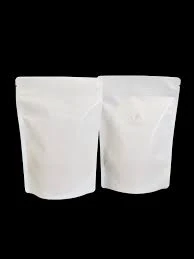pe material
Understanding PE Materials Properties, Applications, and Sustainability
Polyethylene, commonly referred to as PE, is one of the most widely used plastic materials in the world. Its versatility and wide range of applications make it a staple in various industries, from packaging to construction. In this article, we will explore the properties, applications, and the sustainability challenges associated with PE materials.
Properties of PE Materials
Polyethylene is a thermoplastic polymer that comes in several forms, including low-density polyethylene (LDPE) and high-density polyethylene (HDPE). The properties of PE materials can vary significantly based on their density and molecular structure.
1. Chemical Resistance PE is highly resistant to chemicals, making it suitable for packaging food and beverages. It does not react with many substances, which helps to maintain the integrity of the products it encases.
2. Durability Another noteworthy characteristic of PE is its durability. PE materials are resistant to impact, which makes them an excellent choice for items that experience rough handling or need to withstand wear and tear over time.
3. Lightweight PE is a lightweight material, which is crucial in applications where reducing weight can decrease shipping costs and improve energy efficiency in transportation.
4. Flexibility and Toughness The flexibility of PE allows it to be molded into various shapes without breaking, while its toughness ensures that it maintains its structure under stress.
5. Low Moisture Absorption PE materials have low moisture absorption rates, making them suitable for applications that require water resistance.
Applications of PE Materials
The versatility of PE materials means they are found in a multitude of applications across various industries
1. Packaging One of the most significant uses of PE is in the packaging industry. From grocery bags to shrink wraps, PE packaging is ubiquitous due to its durability and lightweight nature. LDPE is often used for film applications, while HDPE is widely used for containers and bottles.
2. Construction In construction, PE is used in insulation, piping, and protective films. Its resistance to moisture and chemicals makes it suitable for applications in environments that challenge other materials.
pe material

3. Automotive PE materials are increasingly used in the automotive industry for parts like bumpers, dashboards, and interior trim. Their lightweight properties contribute to fuel efficiency.
4. Consumer Goods PE is also prevalent in everyday consumer goods, such as bottles, toys, and kitchenware. Its safety features and ease of processing make it invaluable in producing these products.
5. Medical Applications In the medical field, PE is utilized for various uses like surgical gloves, tubing, and containers for pharmaceuticals. Its chemical resistance and non-reactivity are essential for maintaining sterile environments.
Sustainability Challenges
Despite its widespread use, PE materials face significant sustainability challenges. As a petroleum-based product, the production of polyethylene contributes to environmental issues, including the depletion of fossil fuels and greenhouse gas emissions. Moreover, PE is not biodegradable, leading to concerns about long-term waste in landfills and oceans.
To address these challenges, the industry is exploring innovative solutions
1. Recycling PE can be recycled effectively, though recycling rates remain low in some regions. Increasing consumer awareness and improving recycling infrastructure are critical for enhancing the lifecycle of PE products.
2. Bioplastics Research into bioplastics, derived from renewable resources like corn starch or sugarcane, is gaining momentum. While still in relatively early stages, the development of biobased polyethylene could provide a sustainable alternative.
3. Reduced Usage Companies are exploring ways to reduce the amount of plastic used in packaging, such as utilizing thinner films or switching to alternative materials when feasible.
4. Biodegradable Additives Some manufacturers are experimenting with biodegradable additives to enhance the degradation of polyethylene products after disposal.
Conclusion
Polyethylene remains a fundamental material in various industries due to its unique properties and wide-ranging applications. However, the environmental impact of its production and disposal cannot be overlooked. As society moves towards greater sustainability, it is essential to continue developing innovative solutions to mitigate the negative effects of polyethylene on our planet. By embracing recycling, exploring biodegradable alternatives, and promoting responsible usage, we can harness the benefits of PE materials while protecting our environment for future generations.













